The Complete Guide to Purchasing Worm Castings
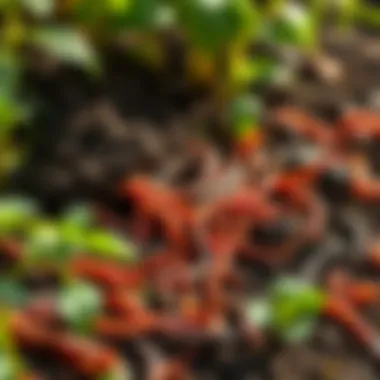
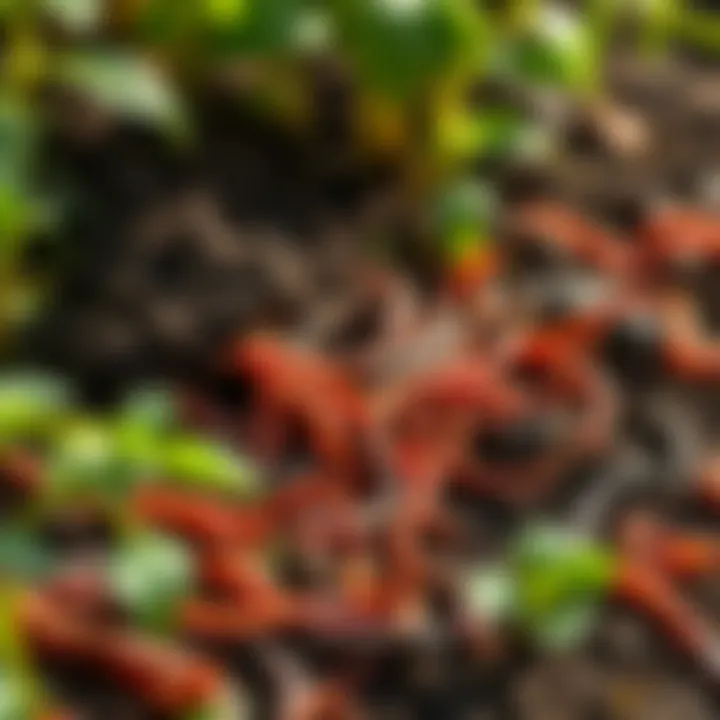
Intro
Worm castings, the nutrient-rich excrement produced by earthworms, have gained significant attention in the realm of sustainable agriculture. They are considered nature's finest fertilizers, packed with essential nutrients, beneficial microorganisms, and organic matter that can profoundly enhance soil health and plant growth. As gardeners and farmers alike strive to embrace eco-friendly practices, understanding the intricacies of purchasing and utilizing worm castings becomes critical.
Overview of the Topic
Definition and Importance
Worm castings, often referred to as vermicompost, are a natural soil amendment that contains an array of nutrients such as nitrogen, phosphorus, and potassium, in forms that are readily accessible to plants. The process of decomposing organic matter through the digestive system of worms results in castings that are not only rich in nutrients but also teeming with beneficial microbes. This microbial life plays a key role in promoting plant health and improving soil structure.
With increasing agricultural challenges such as soil degradation and chemical pollution, the demand for sustainable inputs like worm castings is on the rise. These castings contribute to improved soil aeration, water retention, and drainage, while also reducing the need for synthetic fertilizers. Thus, understanding how to effectively buy and apply worm castings can provide farmers and gardeners alike with the tools to foster a healthier agricultural ecosystem.
Current Trends
In recent years, the trend towards organic farming and sustainable practices has propelled worm castings into the spotlight. Many farmers are now integrating vermicomposting into their farming practices, either through in-house systems or by sourcing from commercial suppliers. Online marketplaces have facilitated access to premium worm castings, allowing consumers to compare quality and prices from different suppliers. Community-supported agriculture (CSA) programs are also increasingly partnering with local worm farming operations, further intertwining the significance of these castings in local food systems.
Key Techniques and Practices
Step-by-Step Guide
- Research: Before purchasing, understand your soil's specific needs and determine how worm castings can enhance soil fertility.
- Identify Quality: Look for dark, crumbly castings that have an earthy smell. This indicates high-quality vermicompost.
- Sourcing: Consider local suppliers or online marketplaces that specialize in organic amendments. Farm-to-table practices are often more sustainable and can yield fresher product.
- Application: Spread worm castings as a top dressing for your garden beds or mix it into potting soils. A general rule of thumb is to use about one-quarter to one-half inch of castings.
- Monitor Results: Pay attention to plant responses post-application; healthy plants should show improved growth and vigor.
Tools and Equipment Needed
- Gloves: To protect your hands while handling worm castings.
- Trowel or Spreader: For effortless application.
- Compost Bin or Worm Bin (if composting): If considering producing your own worm castings, ensure you have adequate space for a vermicomposting setup.
Challenges and Solutions
Common Obstacles
- Cost: High-quality worm castings can be pricey, and shipping costs may add up, especially for smaller orders.
- Quality Control: With a growing number of suppliers, it can be difficult to ensure you are purchasing authentic, nutritious castings without contaminants.
Innovative Solutions
- Community Sourcing: Joining local gardening or farming co-ops can help in pooling resources to buy worm castings in bulk at reduced prices.
- DIY Options: Engage in vermicomposting at home, using kitchen scraps and organic materials to create your own castings. While it’s a time-consuming process, it can significantly reduce costs and enhance sustainability.
Worm castings are not just a product; they are a step towards reviving and maintaining the health of our planet.
By navigating these various aspects related to worm castings, individuals in the agricultural realm can make more informed decisions, aligning their practices with sustainable development goals. The ultimate aim here is to harness the power of these natural fertilizers, enhancing soil quality and, in turn, improving the overall health of crops and the ecosystem.
For further reading on sustainable agriculture practices, you may explore Wikipedia and Britannica.
Understanding Worm Castings
Worm castings, often referred to as vermicompost, are not merely a garden novelty; they are a fundamental component of sustainable agriculture. This section provides an essential backdrop to understanding what worm castings are and why they have gained traction among farmers and gardening enthusiasts alike. Their rich nutritional profile and multitude of benefits make them worthy of consideration in any agricultural setting.
What Are Worm Castings?
Worm castings are the byproducts of the digestion of organic matter by earthworms. Essentially, they are decomposed organic materials, such as fruit and vegetable scraps, leaves, and other biodegradable materials that worms consume. As the worms process this material, they convert it into a nutrient-packed, dark, crumbly substance.
This substance isn't just biologically rich; it is also a powerhouse for plant growth. Many gardeners recognize worm castings as black gold due to their positive impact on soil health and plant vitality. In contrast to conventional fertilizers, which may offer a temporary boost, worm castings are a slow-release option that provides nutrients over time, fostering more sustainable growth.
Nutritional Profile of Worm Castings
The nutritional density of worm castings is noteworthy. They typically contain significant amounts of nitrogen, phosphorus, and potassium—the primary nutrients essential for plant health. Additionally, they are rich in trace minerals and essential micronutrients like calcium, magnesium, and sulfur. One of the key factors contributing to the efficacy of worm castings lies in the microbial life they harbor.
These beneficial microbes not only help in decomposing remaining organic matter further but also assist in making nutrients more bioavailable to plants. Their presence creates a rich ecosystem that nurtures plants more holistically than synthetic fertilizers might.
Benefits of Using Worm Castings in Agriculture
Worm castings offer multiple advantages, which significantly contribute to healthier crops and sustainable farming practices. Below, we explore specific benefits that make worm castings a worthwhile addition to agricultural practices:
Enhancement of Soil Structure
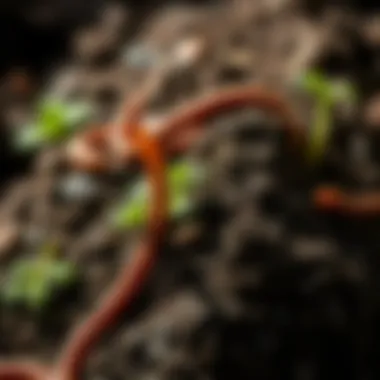
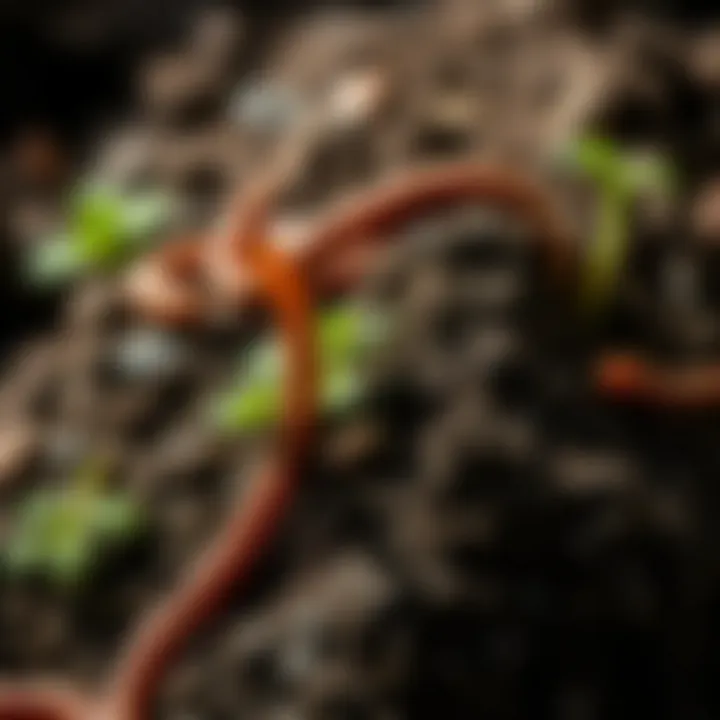
Land with balanced soil structure is akin to a well-tuned engine; it functions smoothly and efficiently. Worm castings help improve soil aeration and drainage, enabling roots to grow deep and access nutrients more readily. This enhancement of soil structure is pivotal for long-term plant health.
A soil rich in organic matter can absorb water more effectively, reducing runoff and erosion. This characteristic makes worm castings especially appealing for regions prone to heavy rainfall or drought conditions, as they can adjust moisture levels effectively.
Increased Nutrient Availability
The increased availability of nutrients is one of the standout features of worm castings. These castings provide a slow, steady release of nutrients over time, as opposed to the abrupt surge that many chemical fertilizers offer. This continual availability ensures that plants have access to essential nutrients throughout their growth cycle.
Additionally, worm castings contain enzymes and hormones that can stimulate growth and allow plants to uptake nutrients more efficiently, leading to robust development all around.
Promotion of Beneficial Microorganisms
Worm castings don’t just bring nutrients; they bring an army of beneficial microorganisms that help in maintaining a healthy soil ecosystem. These microbes work to break down organic material and prevent pathogens that could harm plants. This promotion of beneficial microorganisms can create a symbiotic relationship with crops, leading to improved resilience against diseases.
Without these microorganisms, soils can become lifeless and prone to disease. So, introducing worm castings provides the necessary boost to revitalize the soil.
Improved Moisture Retention
Think of worm castings as a sponge for your garden. They enhance soil's ability to retain moisture, reducing the need for frequent watering. The structure of worm castings allows them to hold water efficiently, which is crucial in minimizing water waste and ensuring that your plants stay hydrated even during dry spells. This increased moisture retention not only benefits the plants but also helps protect local water resources, a valuable factor for eco-conscious farmers.
"Healthy soil is the cornerstone of sustainable agriculture, and worm castings can play a key role in achieving that."
Factors to Consider When Buying Worm Castings
When stepping into the world of worm castings, an informed buyer who knows what to look for can make all the difference. Choosing the right castings is not just a matter of picking any bag off the shelf; it requires careful contemplation of quality and source. The selection can greatly influence your crop yield, soil health, and ultimately, the success of your gardening or farming endeavors. Here are some key elements to bear in mind that will steer you toward making the best decision.
Quality Indicators
Quality indicators help to ensure that the worm castings you are considering will provide the best benefits for your soil and plants. Here, we’ll break down the key characteristics to assess:
Density and Texture
A fundamental aspect of worm castings is their density and texture. High-quality worm castings typically have a fine, crumbly texture that signals effective decomposition processes. This density means the castings have a concentrated nutrient content, which can directly contribute to improved plant growth.
On the flip side, overly dense or clumpy castings might require extra effort to integrate into your soil. If the castings feel too dry or coarse, it could indicate they are either old or improperly processed. A good tick to keep in mind is this: the finer the texture, the better the aeration and drainage properties, making it a beneficial choice for any gardening task.
Color and Odor
The color and smell of worm castings often speak volumes about their quality. Ideally, you’re looking for a rich, dark brown color—much like chocolate cake. This hue indicates a well-aged product brimming with nutrients. As for the odor, quality worm castings should emit an earthy, pleasant smell. If you catch a whiff of something pungent or foul, take it as a red flag.
The unique feature of darker and odorless castings is their ability to aid in promoting healthy microbial activity in the soil. These aspects greatly enhance the overall chemical and biological functionalities of the castings, which are essential for effective gardening.
Microbial Activity
Microbial activity is another crucial quality indicator. When evaluating worm castings, it's enlightening to consider a simple fact: a thriving benthic community in your castings can lead to healthier soil. The presence of diverse microbes can enhance nutrient cycling and organic matter breakdown within the soil environment.
Look for castings that show signs of microbial life—this might be a slightly moist texture or even a faint fizz sound when soil is mixed with water. While it’s tempting to focus on appearance, remember that microbial diversity is one of the most beneficial elements in quality worm castings, ensuring robust soil health and fertility.
Source of Worm Castings
Where you choose to source your worm castings can significantly affect their quality and suitability for your specific needs.
Home Production vs. Commercial Suppliers
Choosing between home production and commercial suppliers can feel like a weighty decision. On the one hand, producing your own worm castings allows for complete control over the process, ensuring they are fresh and free from potential contaminants. This can be a worthwhile choice for those committed to organic practices.
However, it’s important to note that the scale of production can be limited, and it may require more effort to maintain ideal conditions for the worms. On the other hand, purchasing from commercial suppliers might give you access to a wider variety of products and possibly more sophisticated processing methods. The trade-off here is having less control over aspects like quality assurance and sourcing methods.
Organic Certification
If you lean towards organic farming or gardening, checking for organic certification is crucial. Certified organic worm castings ensure that no synthetic additives or harmful substances were used during production. These castings not only foster a healthier environment for plant growth but also align with eco-friendly practices.
However, it’s good to keep in mind that obtaining organic certification can sometimes make products pricier. This can be a challenging choice, especially when assessing the value against your specific gardening or farming methods. Yet, knowing you’re using products that promote sustainability can justify the investment in the long run.
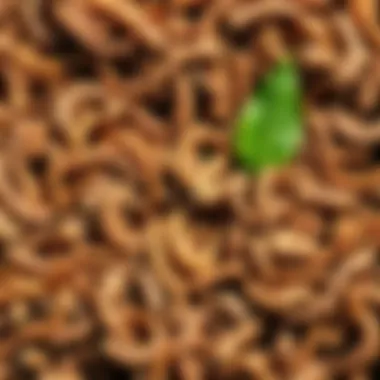
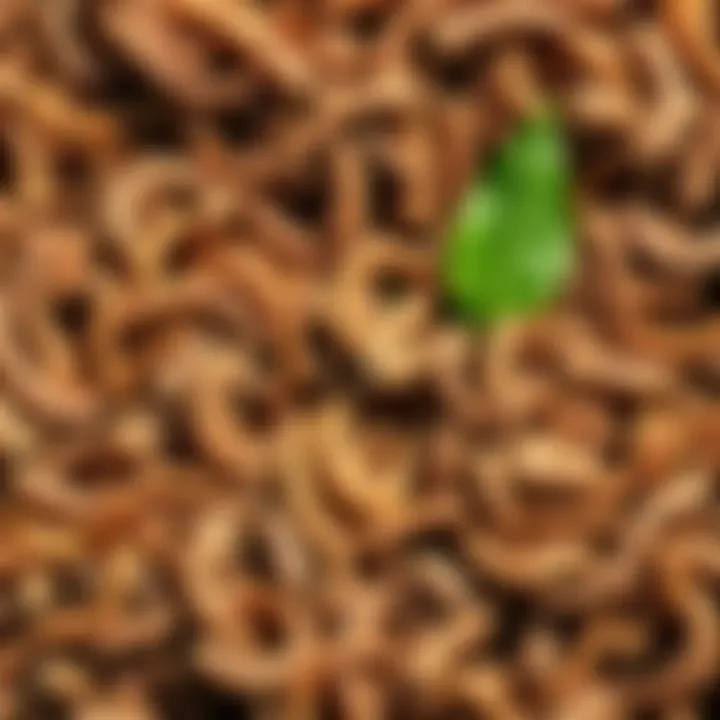
In summary, when buying worm castings, thoroughly evaluating their quality indicators, preferred sources, and organic certifications will foster a more rewarding experience. This knowledge not only empowers you as a buyer but also positions you to cultivate healthier plants and sustainable practices.
Where to Buy Worm Castings
When considering the purchase of worm castings, understanding where to buy them plays a crucial role in maximizing their benefits for your gardening or agricultural needs. The sources you choose not just impact the quality and price but also the overall convenience and reliability of your supply. Let’s dig into the most common venues for obtaining worm castings—local gardening stores and online options—providing insights into both environments.
Local Gardening Stores
Local gardening stores can be a goldmine for those looking to physically inspect their worm castings before buying. These shops often curate their products based on quality, which can be reassuring for first-time buyers. You get the chance to breathe in the earthy aroma of rich castings and evaluate their texture firsthand, ensuring the product meets your standards.
Additionally, local stores often have knowledgeable staff who can offer advice on how best to incorporate worm castings into your gardening routine. If you're unsure about how much to buy or how to use castings effectively, asking for guidance in person can be beneficial. One downside, however, is that the selection may be limited compared to what online retailers offer. Not all local stores carry worm castings, and those that do may have a higher price tag due to overhead costs.
Online Retailers
With the click of a mouse, online retailers open up a vast world of options for purchasing worm castings. From large companies to small-scale, local farms offering their products online, you can find an extensive variety of choices. Here’s a closer look at the two primary types of online retailers:
Direct-from-Farm Options
Buying worm castings directly from farms allows you to support local agriculture while ensuring a fresher product. Many farms offer details about their methods, confirming that the castings come from healthy worms and are produced with care. This transparency is a key characteristic of direct-from-farm options. Moreover, such suppliers often provide bulk buying discounts, making it a cost-effective choice for gardeners with larger plots.
A unique feature of these farms is their emphasis on organic practices. Many stick to all-natural processes without the use of synthetic additives or harmful chemicals. However, potential downsides could include longer shipping times, especially if you’re located far from the farm, and limited returns if the product doesn’t meet your expectations.
Marketplace Platforms
Online marketplace platforms, like Amazon or eBay, offer a wide array of products, including worm castings from various suppliers. The convenience of these platforms is hard to beat. You can compare numerous products and read reviews from other buyers, giving you more informed insights into the quality and effectiveness of the worm castings.
One major advantage of these platforms is the competitive pricing often found due to the multitude of sellers. You might also benefit from fast shipping if you have a premium account or if you're purchasing from a local seller within the platform. Still, there is a chance of inconsistency in quality since not all sellers maintain the same high standard of production. As a buyer, it’s essential to read descriptions and reviews thoroughly to avoid a disappointment.
In summary, whether you choose local gardening stores or online retailers, understanding the pros and cons of each can help you make informed decisions. Always prioritize the quality of the worm castings over the price to ensure that you are optimizing your gardening efforts.
Cost Considerations
Understanding the costs associated with purchasing worm castings is crucial for anyone looking to enhance their agricultural practices sensibly. The price of worm castings can vary significantly based on various factors, and being aware of these can lead to smarter, more economical buying decisions. Evaluating the cost-effectiveness of worm castings is not only about their upfront price but also encompasses the value they add to soil health and crop yield in the long run.
Price Variability Across Regions
When it comes to the cost of worm castings, geography plays an essential role. Prices can fluctuate wildly based on the region where you are purchasing. For instance, in urban areas or places with a high demand for organic gardening products, prices may lean toward the higher side. In contrast, regions closer to worm farms or agricultural hubs might offer more competitive prices. The transportation expenses tied to bringing these castings to market can also cause discrepancies.
It's a good idea to survey local suppliers and compare prices before making a purchase. By searching for nearby options or checking online platforms, one can often find a better deal or even local production that cuts out the middleman.
Factors Influencing Price
Packaging
The aspect of packaging is often overlooked when considering the cost of worm castings. With packaging materials ranging from biodegradable bags to rigid containers, the choice reflects on the overall pricing. High-quality, eco-friendly packaging might be more expensive, yet it often provides advantages. For one, it protects the castings better during shipping and storage, ensuring they remain effective.
Conversely, cheaper packaging can lead to loss of quality due to moisture or contamination, which can detract from the value of the product. Therefore, while it may seem appealing to go for lower-priced casting packaged poorly, you could be shooting yourself in the foot in the long run. Key characteristics, like resealable bags or compostable materials, may contribute to long-term savings by preserving quality.
Shipping Costs
Shipping costs can add a significant amount to the total expenses when acquiring worm castings, especially if you order them online. Depending on the supplier and your location, shipping might increase the price beyond what you anticipated, especially if you're ordering from far away. For those living in remote areas, these costs might lead to a large chunk of the overall price, making it essential to factor them in when budgeting.
For consumers, the key is to seek local suppliers whenever possible. This strategy not only mitigates shipping costs but also supports local businesses. If online options are your only choice, look for suppliers that offer free or reduced shipping on orders above a certain amount. It’s often worth purchasing in bulk to lower these costs too.
Bulk Purchasing Discounts
Buying in bulk can bring down costs significantly, and this strategy is worth exploring. Many suppliers offer discounts for larger orders, making it a viable option for avid gardeners or farmers who plan to use worm castings frequently. When you purchase greater quantities, the per-unit cost often diminishes noticeably.
However, while bulk discounts can save you money upfront, you also need to ensure that you have adequate storage space and can use the castings before they lose efficacy. This means it's vital to calculate your usage rates and cycle, ensuring you aren't buying more than you can use. If you’re involved in large-scale farming, the bulk purchasing model could be a game-changer, providing substantial long-term savings while supporting sustainability efforts.
"In the world of worm castings, understanding cost dynamics can empower you to make savvy purchasing decisions that benefit both your wallet and your soil."
Careful consideration of these cost factors will also allow you to maximize your investment in worm castings, ultimately leading to healthier plants and richer soil. Being informed about what influences pricing gives you leverage, turning your purchases into strategic moves towards sustainable agriculture.
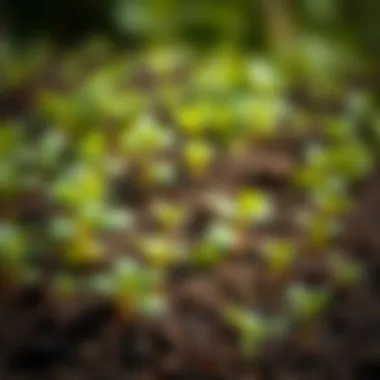

Utilizing Worm Castings Effectively
Utilizing worm castings effectively is a cornerstone for any gardener or farmer aiming to improve soil health and enhance plant growth. Worm castings, the nutrient-rich excrement of earthworms, are not merely a supplement; they’re a fundamental aspect of organic farming practices. Familiarizing yourself with various application techniques can significantly boost the benefits of worm castings, ensuring that your plants receive optimal nutrients in a manner that aligns with sustainable practices.
Application Techniques
Top Dressing in Gardens
Top dressing with worm castings entails spreading a layer over the soil surface. This method is beneficial for a few reasons. First off, it allows nutrients to leach down into the soil gradually, feeding the plants over time. The key characteristic of top dressing is ease of application; just sprinkle it around the base of your plants. Many gardeners favor this method because it requires minimal effort and can be done at any time of the growing season.
A unique feature of top dressing is its ability to improve soil structure. As worm castings break down, they enhance soil porosity, which promotes better aeration and drainage. However, care must be taken not to apply too thick a layer, as this might smother the plants. All in all, top dressing is a straightforward yet effective way to incorporate these natural fertilizers into your garden.
Mixing with Potting Soil
Mixing worm castings with potting soil creates a nutrient-rich concoction ideal for starting seeds or transplanting seedlings. By blending the two, you're essentially fortifying your basic potting mix with vital nutrients, which encourages healthier root development and vigorous growth. The key characteristic here is the enhanced nutrient availability; worm castings provide a slow-release of nutrients that can sustain young plants as they establish.
A unique feature of this approach is the consistency it offers. When you mix worm castings thoroughly into the soil, you ensure even distribution throughout the pot, which is particularly advantageous for container gardening. Be mindful though, as using too much can lead to overly rich conditions, potentially causing issues like burnt roots or leggy growth in young plants.
Creating Organic Fertilizer Tea
Creating organic fertilizer tea from worm castings is akin to brewing a potent herbal concoction for your plants. This method involves steeping worm castings in water, which allows soluble nutrients to infuse into the liquid. The resulting tea can then be used for watering plants or as a foliar spray. The key characteristic of this technique is the quick nutrient uptake it provides; plants absorb nutrients readily through their leaves when sprayed.
One unique feature of worm castings tea is its microbial benefit. By using this tea, you not only supply nutrients but also beneficial microorganisms that can populate and improve the soil ecosystem. It's a very handy method, especially for those who want immediate results. Yet one must exercise caution; over-frequent applications can lead to nutrient overload, so it’s best done in moderation.
Timing and Frequency of Application
Timing and frequency of application are crucial when utilizing worm castings. Generally, it’s best to apply castings during the growing season when plants are actively seeking nutrients. The frequency will depend on the specific crops you're growing and the condition of your soil.
Most farmers recommend every four to six weeks during the peak growing period. This helps in ensuring that your plants are consistently nourished while also avoiding the pitfalls of over-fertilization.
Utilizing worm castings effectively ensures your garden thrives, reflecting the skill and attention of a dedicated gardener. Whether through top dressing, mixing with potting soil, or creating tea, each method has its strengths. Being mindful of application timing can further enhance results, leading to a thriving ecosystem in your garden.
Environmental Impact of Using Worm Castings
The discussion surrounding worm castings often brings to light not only their incredible benefits for individual gardens but also their larger implications for our environmental footprint. As agriculture enthusiasts and farmers alike ponder their cultivation strategies, understanding the environmental impact that worm castings provide becomes ever more crucial. This section dives into how these organic fertilizers contribute to sustainable practices, enhance soil health, and promote a symbiotic relationship with nature.
Benefits to Soil Health
Worm castings are often referred to as black gold for good reason. They are packed with nutrients that play a vital role in improving soil health. When distributed in gardens or fields, these castings enhance soil structure, promoting aeration and drainage. The texture is much finer than traditional compost, allowing it to work differently in retaining moisture. This quality ensures that plants have access to water without the risk of being submerged, promoting healthier root systems.
Moreover, worm castings aid in balancing the soil pH, making it more hospitable for various plants. The diverse range of microbial life that thrives in these castings is a boon for the soil ecosystem, stimulating the biological activity necessary for nutrient cycling. All these factors contribute to increased crop yield, showcasing that what’s good for the farmer’s bottom line ultimately aligns with ecological health.
"Utilizing worm castings encourages a natural resurgence of beneficial organisms that can mitigate the need for chemical fertilizers, making it a win-win for both the earth and the farmer."
Incorporating worm castings into agricultural practices can reduce soil erosion, which is a pertinent concern today. With the loss of topsoil becoming increasingly severe in many regions due to conventional farming methods, using these castings can significantly mitigate this problem over time. Therefore, worm castings are not only a smart choice for immediate foliage benefits but also a long-term investment in healthy soil ecosystems.
Sustainability of Worm Farming
As the world grapples with issues surrounding sustainability and waste management, worm farming emerges as a creative solution. The process of producing worm castings often utilizes organic waste materials such as kitchen scraps which would otherwise contribute to landfill overflow. This recycling process turns waste into valuable nutrition for crops, highlighting an innovative approach to sustainable agriculture.
The actual farming of worms requires minimal resources compared to traditional livestock or crop production. Worms can be raised in small spaces, and with appropriate methods, even urban dwellers can engage in this eco-friendly practice. This adaptability fosters a sense of community involvement, as local businesses and urban gardeners find common ground in utilizing sustainable practices.
In summary, the shift toward adopting worm castings signifies a larger commitment to harmonious farming practices. The integration of worm castings into your gardening regimen is not only a step towards resilient crops but also a leap towards a cleaner, greener planet. When approaching agriculture with an eye toward sustainability, worm castings offer a path that bridges productivity with ecological responsibility.
Closure
In summing up the insights on worm castings, it’s clear that they hold significant value for anyone invested in agriculture, whether as hobbyists or professionals. The role of worm castings transcends mere soil amendment; it embodies a holistic approach to nurturing plant life and enhancing overall ecosystem health. By incorporating worm castings into gardening and farming practices, one isn't just adding a nutrient source; rather, one is fostering a living environment conducive to robust plant growth and sustainability.
Recap of Key Points
- Understanding Worm Castings: Recognizing that these organic matter are rich in essential nutrients, enhancing soil fertility, structure, and microbiome diversity.
- Factors to Consider When Buying: Knowing what to look for in terms of quality indicators and sourcing options, including whether to buy from local suppliers or go with larger commercial outlets.
- Cost Considerations: Important to weigh the geographical price fluctuations and factors impacting cost, like packaging and shipping.
- Utilizing Worm Castings: Mastering application techniques and timing is crucial for maximizing benefits.
- Environmental Impact: Acknowledging the positive ripple effects on soil health and the sustainability aspect of worm farming.
Future Trends in Worm Castings Market
Looking ahead, several trends are likely to shape the worm castings market. With the ever-increasing focus on organic farming practices and sustainability, demand for high-quality worm castings is expected to rise. Small-scale local producers may gain traction as consumers lean towards supporting community-based agriculture.
- Technological Advances: Innovations in worm farming methods and distribution will likely make castings more accessible. The use of apps and online platforms may facilitate direct purchases, connecting consumers with local producers more efficiently.
- Increased Awareness: As more people begin to recognize the environmental benefits, worm castings could become a household name in organic gardening circles. Educational content will likely expand, leading to more informed consumers.
- Policy Changes: With governments amplifying the call for sustainable practices, we might see favorable regulations that promote organic amendments like worm castings.
In essence, as awareness of the ecological benefits of worm castings spreads, they are poised to become a mainstay in the toolkit of the environmentally conscious gardener. Seeking out high-quality options and understanding the trends will empower farmers and enthusiasts alike to make informed decisions, ultimately benefiting both their plants and the planet.



